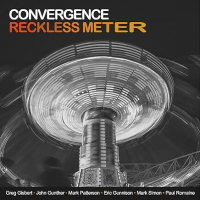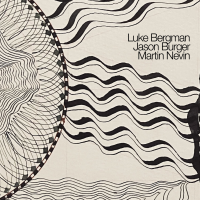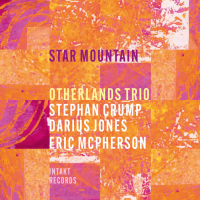Home » Jazz Articles » Multiple Reviews » Jan Garbarek, Keith Jarrett and Azimuth light up ECM Lum...
Jan Garbarek, Keith Jarrett and Azimuth light up ECM Luminessence reissues
 Jan Garbarek Quartet
Jan Garbarek Quartet Afric Pepperbird
(1971) 2024
The backstory... When producer Bob Thiele left Impulse! in 1969 to set up Flying Dutchman, his label notched up some historic firsts, including debut albums from Horace Tapscott, Leon Thomas and Gil Scott-Heron. Flying Dutchman also became the first US label to release an album by a Norwegian jazz musician. Jan Garbarek's Esoteric Circle (1971), which was actually produced by George Russell, who was then living in Scandinavia, will come as a shock to anyone whose familiarity with Garbarek's work stretches back no further than the mid 1970s. It is... bracing. More particularly, it is mpassioned and confrontational. Garbarek traverses much the same territory as Albert Ayler or late period John Coltrane. The so-called "ECM sound" which Garbarek forged in collaboration with label founder and artistic director Manfred Eicher, may have been only a few years away but it was on an altogether different planet.
It has been suggested that Garbarek's later use of Nordic folk-song material was inspired by Ayler's use of Americana. But in several interviews, Garbarek has said he was given the idea by another US expat, Don Cherry, round about 1969/70. Cherry can, too, almost certainly be credited with the Garbarek group's use of kalimba on "Skarabée," Afric Pepperbird's opening track....
If Thiele's reputation is affirmed by the release of Esoteric Circle, so is Manfred Eicher's enhanced by Afric Pepperbird. Recorded almost exactly a year later than Esoteric Circle, in September 1970, it features the same quartet of soon-to-be stars—Garbarek on tenor with guitarist Terje Rypdal, bassist Arild Anderson and drummer Jon Christensen—and finds Garbarek in far-out sonic territory, with Eicher in the producer's chair. The album's centrepiece, "Beast Of Kommodo," at 12:23 its longest track, is everything the words in the title suggest. You can get a taste from the Quartet's 1971 live performance on the YouTube footage below. Mnemosyne (ECM, 1999) this is not. Garbarek's aesthetic trajectory reminds us that practically all the tenor saxophonists who were inspired by Coltrane's late period oeuvre later moved from the edges to more centrist ground; even Ayler was travelling in that direction at the time of his passing. Only Coltrane himself progressed from the centre to the margins. Would he have shifted course had he lived longer? We shall never know.
 Keith Jarrett / Jan Garbarek
Keith Jarrett / Jan Garbarek Luminessence
(1975) 2024
There are two sorts of with-strings albums by jazz musicians. The first is of the type recorded by Charlie Parker, Clifford Brown and Billie Holiday, respectively Charlie Parker With Strings (Mercury, 1950), Clifford Brown With Strings (EmArcy, 1955) and Lady In Satin (Columbia, 1958). With this model, the strings are, at best, used to enhance atmosphere and provide depth of background and, at worst, provide what used to be called sweetening.
As time rolled by, and jazz became more sure of itself, a second type of strings-heavy orchestral album emerged, wherein simple backgrounds were replaced by more assertive arrangements. Crucially, these were written by musicians who did not feel compelled to conform to classical conventions. The first was Stan Getz's Focus (Verve, 1961), with Eddie Sauter the composer/arranger. Alice Coltrane's ventures into string orchestrations in the early 1970s, some made with the collaboration of Ornette Coleman, also have enduring substance. Worth mentioning, too, is Palle Mikkelborg's "Waltz For Debby Suite," written for pianist Bill Evans and recorded for radio broadcast in 1969. It was released as part of Treasures (Solo, Trio & Orchestra Recordings From Denmark (1965-1969) by Elemental in 2023.
Keith Jarrett and Jan Garbarek's Luminessence is firmly among this second category of with-strings projects. Garbarek, playing tenor and soprano saxophones, is supported by the strings of the Suedfunk Symphony Orchestra conducted by Mladen Gutesha. Jarrett does not perform on the recording, but the compositions and arrangements are his. Luminessence succeeds because Jarrett and Garbarek's musical sensibilities were at the time so closely aligned: indeed, Jarrett's top lines often sound like improvisations by Garbarek. The music has an intensity equal to that on Focus and covers similar emotional terrain, from melancholic to full-blown passion.
 John Taylor / Norma Winstone / Kenny Wheeler
John Taylor / Norma Winstone / Kenny Wheeler Azimuth
(1977) 2024
Wife and husband team Norma Winstone and John Taylor conceived the group which would become Azimuth as a duo, and in 1976 Taylor pitched the idea to Manfred Eicher. In a 2023 interview with Klemen Breznikar, Winstone, the only surviving member of Azimuth, described how it became a trio with Kenny Wheeler and how it acquired its name.
"John Taylor had just bought a synthesiser and on the night before he went [to meet Manfred Eicher] he came up with a loop and asked me to improvise over it and he recorded it," said Winstone. "When he met Manfred Eicher he played some of the studio recordings we had made and he seemed to like them but when he played him the little recording with synthesiser Manfred said, 'I can hear a flugel with the voice. Let's involve Kenny Wheeler also in the recording.' So really Azimuth was Manfred Eicher's creation.
"We didn't have a name then of course but we recorded the synthesiser piece in the studio and had to find a title for it. Manfred said that it sounded to him like a journey. So when John Taylor went through the Thesaurus looking for words connected with journey / direction, he found the word azimuth. So the synth piece was called 'Azimuth' and that became the name of the group." In the same interview, Winstone said: "It was on listening to the playbacks [of Azimuth] that I realised that I could bear to listen to my voice! I had never liked the sound I made and I think that this was the first time I had been recorded sympathetically and was aware of Kenny Wheeler's influence on my sound."
The album is perhaps the most singular of the three discs in this batch of Luminessence releases, which is a high bar to top. It is, anyway, as important as any of the members' individual early period landmarks, and while the group scaled similar Misty Mountains heights on subsequent releases, they never got higher. Azimuth's closest present-day comparator is the British bassist/singer/composer Ruth Goller, whose Skyllumina (International Anthem, 2024) not only shares nominative overlap with Luminessence but, more importantly, inhabits similarly exalted off-planet terrain.
Tracks and Personnel
Afric PepperbirdTracks: Scarabee; Mah-Jong; Beast Of Kommodo; Blow Away Zone; MYB; Concentus; Afric Pepperbird; Blupp.
Personnel: Jan Garbarek: tenor saxophone, bass saxophone, clarinet, flutes, percussion; Terje Rypdal: guitar, bugle; Arild Andersen: bass, African thumb piano, xylophone; Jon Christensen: percussion.
Luminessence
Tracks: Numinor; Windsong; Luminessence.
Personnel: Jan Garbarek: tenor saxophone, soprano saxophone; Strings Of Sudfunk Symphony Orchestra.
Azimuth
Tracks: Sirens' Song; O; Azimuth; The Tunnel; Greek Triangle; Jacob.
Personnel: John Taylor: piano, synthesizer; Norma Winstone: voice; Kenny Wheeler: trumpet, flugelhorn.
Tags
PREVIOUS / NEXT
Support All About Jazz
 All About Jazz has been a pillar of jazz since 1995, championing it as an art form and, more importantly, supporting the musicians who make it. Our enduring commitment has made "AAJ" one of the most culturally important websites of its kind, read by hundreds of thousands of fans, musicians and industry figures every month.
All About Jazz has been a pillar of jazz since 1995, championing it as an art form and, more importantly, supporting the musicians who make it. Our enduring commitment has made "AAJ" one of the most culturally important websites of its kind, read by hundreds of thousands of fans, musicians and industry figures every month.





















